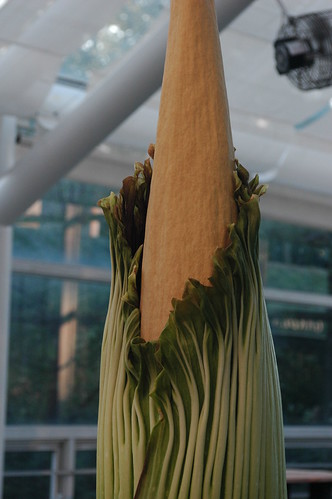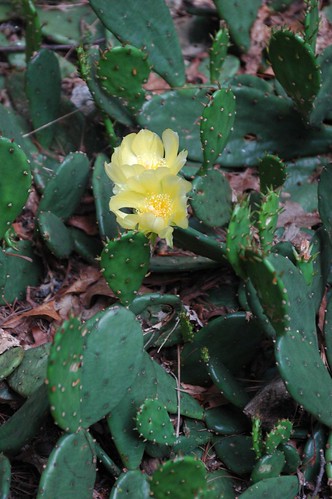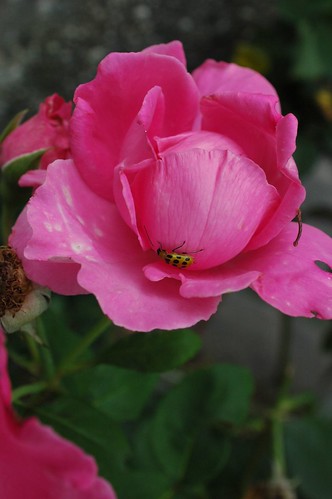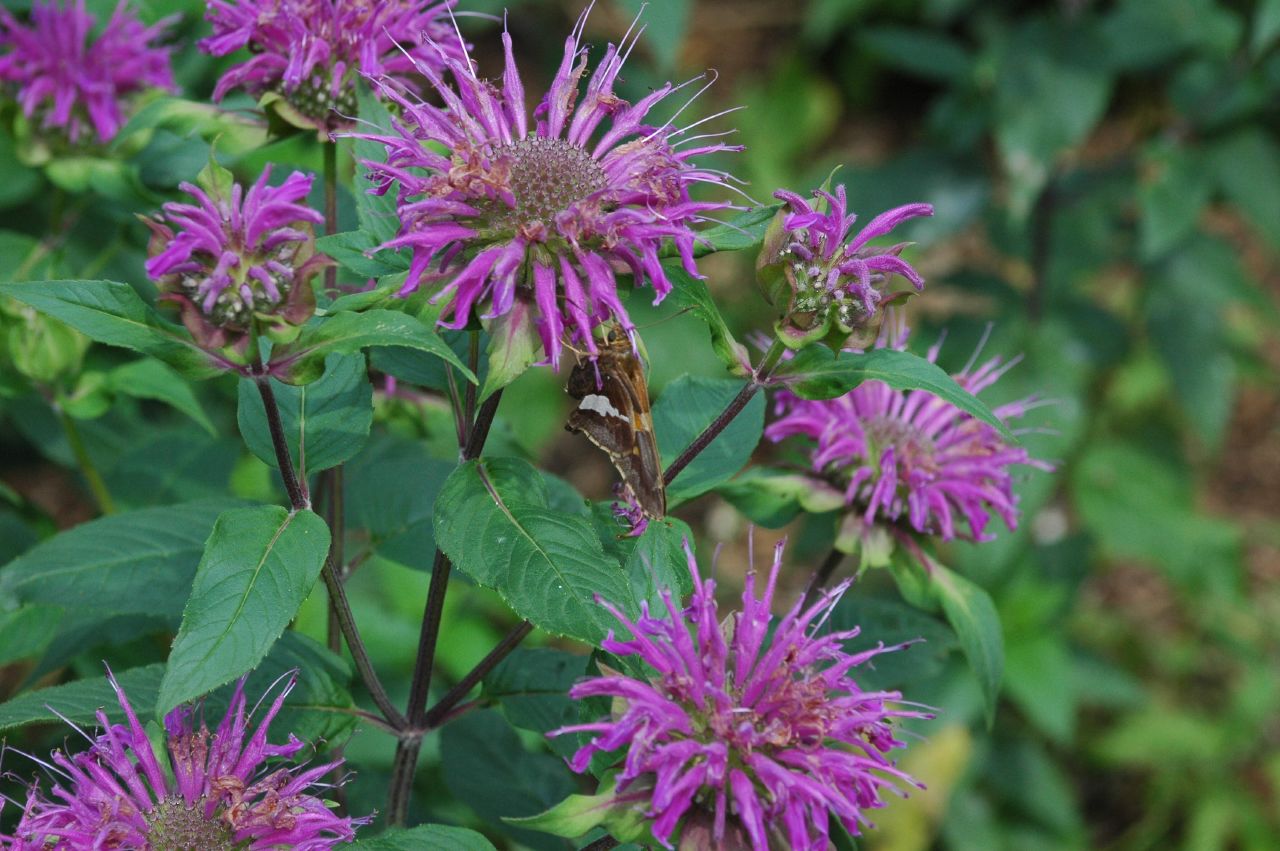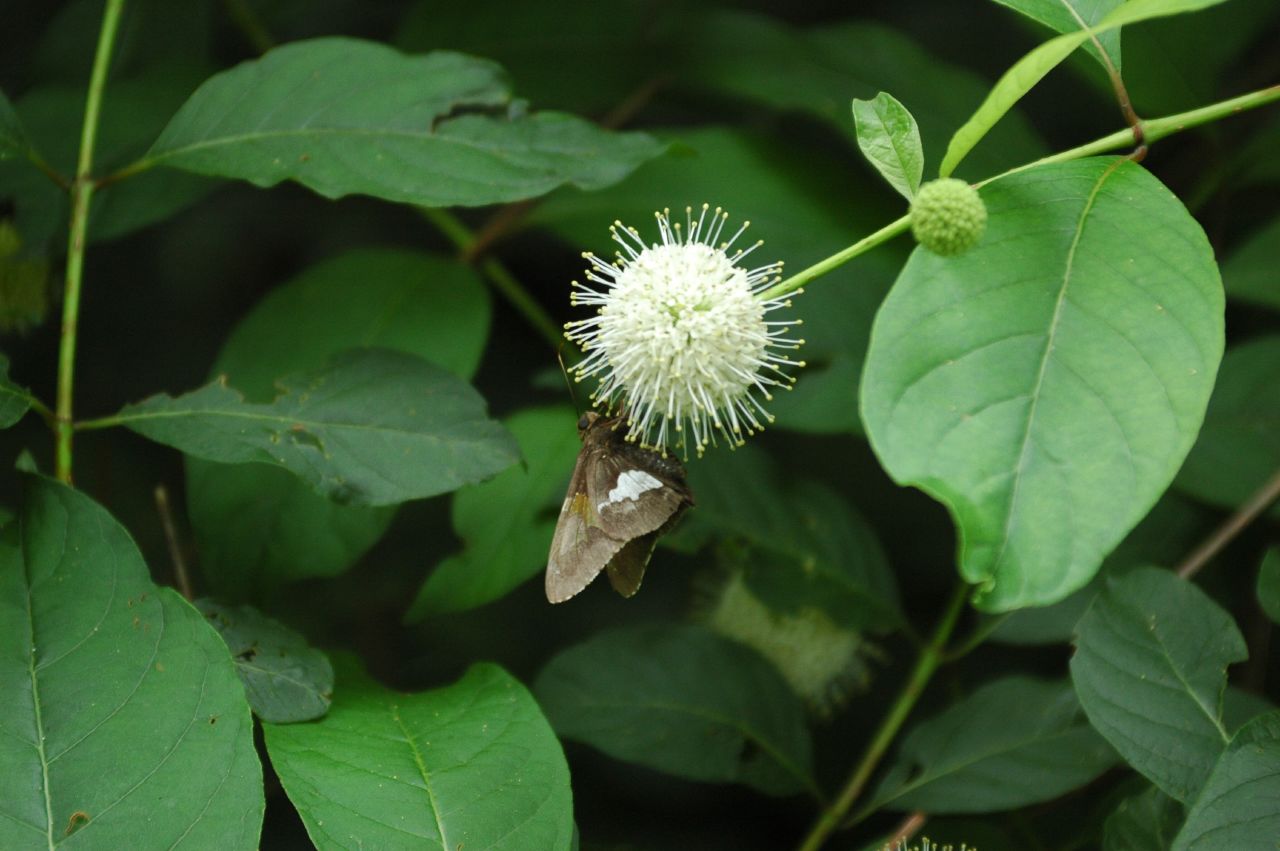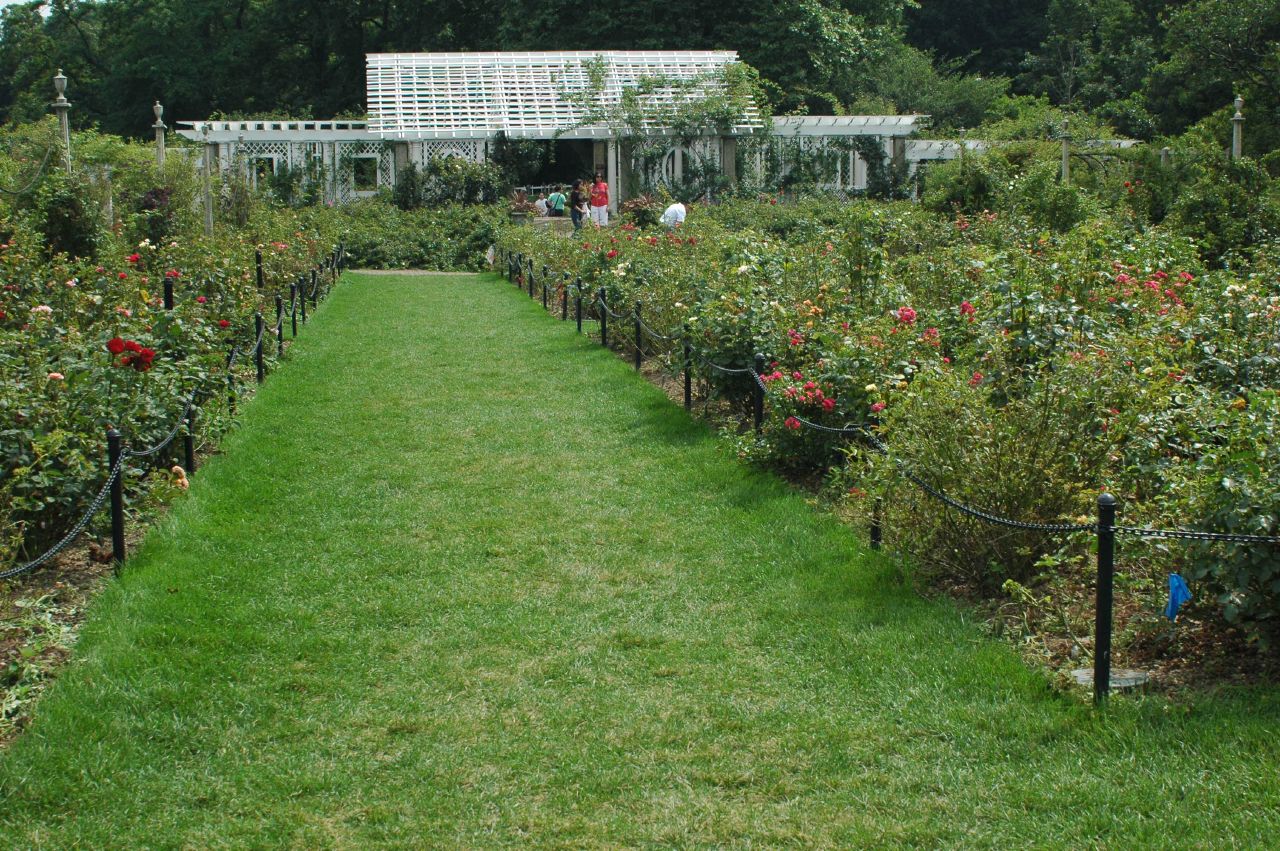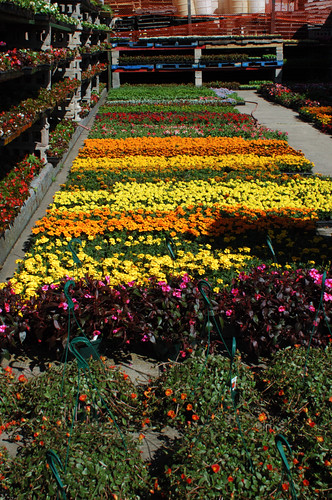Dr. Alessandro Chiari, Plant Propagator at BBG, explaining A. titanum bloom morphology, behavior, and ecology.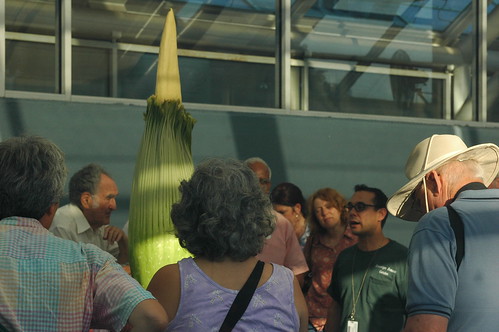


Titan arum’s bloom structure and sequence has elements common to many, if not most, aroids. Blooms of plants in this family don’t just have exotic (and, if you’re of such a mind, suggestive) structure, they exhibit behavior:
- The spathe, the outer sheath of the bloom, will continue to pull away from the spadix, widening and deepening in color as it does. When fully open, it will be a few feet in diameter.
- As the spathe opens, the female flowers, in a band at the very bottom of the spadix, will begin to bloom and become receptive to pollination. It’s at this time only that the bloom becomes “fragrant.”
- The fragrance attracts pollinators, in this case: carrion beetles and sweat bees, which are attracted to the scent of rotting flesh in which to lay their eggs.
- Not finding any rotting flesh, they continue to hang out, depositing any pollen they have brought in from visiting other Titan arums.
- Having been pollinated, the female flowers begin to wither.
- The male flowers, in a band just above the female flowers on the spadix, become fertile and begin to express pollen.
- The scent dies. The beetles and bees, with nothing to keep them there, begin to leave the base of the spadix. As they do, they pick up fresh pollen from the male flowers on their way up the spadix and out of the spathe.
- After that, the spadix and spathe collapse and the plant, hopefully, sets seed.
This precisely timed choreography enforces cross-pollination between different plants. Since the female flowers bloom before the male flowers, not even trace amounts of pollen from the same plant will be around to fertilize the female flowers. It does require available pollinators and enough blooming plants within flying distance of each other.
Even in the wild, this is not a certainty by any means. Habitat destruction and collection of the plant have reduced its numbers and the possibility that two plants will bloom close enough in time and space for successful pollination.
In cultivation, when the most recent bloom was weeks or months before and thousands of miles away, the propagators must step in. BBG received pollen from Virgina Tech on August 8. When the female flowers are ripe, Alessandro Chiari, BBG’s Plant Propagator, will step in to pollinate them. BBG hopes to collect the seed from their plant and propagate more of it.
Previous posts:
- Earlier today: Happy Corpse Flower Day!
- August 9, 2006: Field Trip Notes, 1 of 3
- August 9, 2006: What’s in a name?
- August 7, 2006: Titan arum to bloom at BBG
Links:
- BBG’s Titan Arum pages
- Wikipedia article
- My flickr set of photos from the visit

